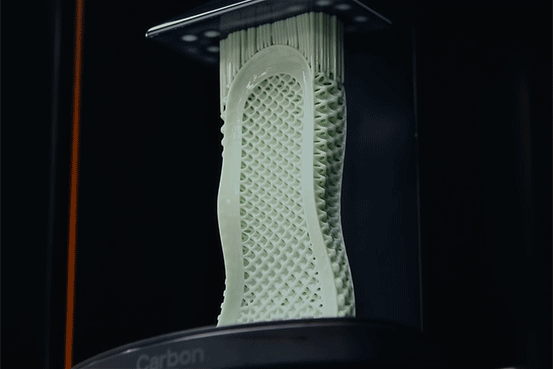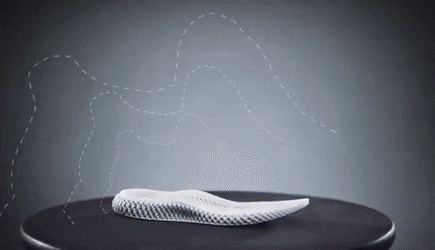 Adidas is killing off its Speedfactories. Yes, the 3D printing hypebeast itself, shoe manufacturer Adidas has decided to end its Speedfactories local manufacturing initiative. Just a few years ago the firm wanted to bring localized shoe manufacturing back to Europe by producing, in a highly automated way, close to the consumer. One of the major technologies that was to make this happen was 3D printing, more specifically Carbon. The Speedfactories were initially launched in 2017 with Adidas.
Adidas is killing off its Speedfactories. Yes, the 3D printing hypebeast itself, shoe manufacturer Adidas has decided to end its Speedfactories local manufacturing initiative. Just a few years ago the firm wanted to bring localized shoe manufacturing back to Europe by producing, in a highly automated way, close to the consumer. One of the major technologies that was to make this happen was 3D printing, more specifically Carbon. The Speedfactories were initially launched in 2017 with Adidas.
“To reduce manufacturing times and production periods, Adidas will use 3D printing or additive manufacturing methods as the core technology of its factory. By mid-2017, the German sportswear giant aims to produce roughly 500,000 pairs of shoes annually – nearly 1,370 pairs of shoes on a daily basis. In order for Adidas to match its global production level of 300 million pairs of shoes, the company will use high performance and enterprise-grade 3D printers.”
“the Adidas Speedfactory will replace thousands of human workers with robots, to automate some of the manual processes in the manufacturing phase. In comparison to its Asian factories, which house thousands of human workers, the Adidas Speedfactory will be run by around 160 employees.”

The Adidas Futurecraft sole
In April of 2017 the first athletic shoe to be printed at scale was announced. Eric Liedtke, Adidas Group Executive Board Member Responsible For Global Brands, had this to say,
“With Digital Light Synthesis, we venture beyond limitations of the past, unlocking a new era in design and manufacturing,” said Liedtke. “One driven by athlete data and agile manufacturing processes. By charting a new course for our industry, we can unleash our creativity- transforming not just what we make, but how we make it.”

If you play it backwards the shoe is drowning.
When the Futurecraft 4D was launched, Ben Herath, VP Design for Adidas Running, stated that,
“FUTURECRAFT 4D demonstrates the potential of Digital Light Synthesis in unlocking a new era in sport performance design. One driven by athlete data and incomparable precision to provide the best for the athletes, enabling them to make a difference in their run. This innovation changes how we design and free ourselves from limitations of the past. The possibilities of what we can now create with this technology to push the boundaries of performance is truly endless.”
It seems that this era is now at an end. Or is it? I’ve always been skeptical of Adidas’ hype creation in athletic shoes, and I got a lot of flak for pointing out that a cost estimate on the Carbon sole would be $43 per midsole. I was also skeptical about the longevity of the soles.
“This is a part that is put under continual mechanical stress. It is not a unidirectional stress as in a lab test however but under complex multidirectional stresses. If the 3D printed shoe sole part is under repeated strain will the residual stress of the previous step cause the sole to eventually shear? “
and
“I’m at present skeptical that the resin material would perform for long periods as a functional shoe sole.”

Now Adidas, according to Reuters, seems skeptical too.
” Adidas plans to close high-tech “robot” factories in Germany and the United States it launched to bring production closer to customers, saying on Monday deploying some of the technology in Asia would be “more economic and flexible”.
Martin Shankland, Adidas head of global operations, said the factories had helped the company improve its expertise in innovative manufacturing, but applying what it had learnt with its suppliers would be “more flexible and economic”.
A few things could be going on here, let’s look at 5 possible scenarios and see what could be happening. Below each scenario I’ll put a Pro and Con section to determine how likely that scenario is.
1. 3D Printing is not suited for prime time. 3D printing is just not ready to produce an athletic shoe, individualized shoes are dead and there are no performance benefits to be had.
Pro: 3D printing can not produce the entire shoe. Athletic shoes have dozens of materials and dozens of production steps, we can not yet mimic these materials fully. Our materials and processes are generally too expensive and not automated enough. Typically if the redesign does not add sufficient value, the part will be more expensive than conventional manufacturing and not make sense.
Con: Adidas has focused on the midsole and was looking to other manufacturing technologies to automate the entire shoe production meaning the onus is not entirely on us. Nothing in Adidas’ disclosures or media statements ever gave any credence to the company solving the core manufacturing challenges of assembling a shoe out of dozens of disparate parts that are then automatically joined by some magic.
2. Carbon is not a viable manufacturing technology. Since Adidas partnered with and invested in Carbon, which got $682 million in funding, this is essentially a public admission by Adidas that Carbon is not a suitable manufacturing technology.
Pro: The sensibility of using a nonrecyclable thermoset material for an athletic shoe was long in doubt as was the high cost of Carbon as technology. Perhaps the real-world performance of the Futurecraft or other shoes was lacking, or the cost picture just didn’t add up?
Con: Many in the industry are skeptical of Carbon but this may be just a hiccup and an internal Adidas thing and have nothing at all to do with Carbon as a technology. Or indeed it could be a decision taken for a whole host of other reasons.
3. Industrie 4.0 is despite all the hype and subsidy dead. The Germans are, through one of their most internationally known and largest firms, publicly now stating that Industrie 4.0 was a subsidy trough and after eating their fill Adidas is indicating that manufacturing will in fact not return to Europe.
Pro: This is an embarrassing thing publicly for a large German firm to disclose. After years of Made in Germany, Industrie 4.0 press release nonsense, this is the nail in the coffin. Why else would Adidas do this if Industrie 4.0 wasn’t dead?
Con: Maybe Adidas doesn’t have the technological expertise to do this and does not believe enough in manufacturing in Europe? If this were true than other companies with more manufacturing and technical prowess could make European manufacturing viable again.
4. 3D Printing and Carbon may still be viable but for the foreseeable future manufacturing in Asia is here to stay. This would be quite the shocker to the automated production, lights out factory Industrie 4.0 Seminar crowd.
Pro: We know that support removal is a third of part costs in 3D printing in plastics. I estimated “7 minutes per sole to do all of this, that would add $12.60” for support removal, cleaning, and washing per sole. Maybe the robots are just not there yet and we can’t do this adequately and it could make sense to not do the Speedfactory thing. Maybe the Industrie 4.0 thing is bull and Asia will always be cheaper? This would have profound implications for the European Union not to mention put a few question marks round much of the Union’s subsidies in local manufacturing research.
Con: Why not keep selling high-cost high margin shoes in limited quantities for the marketing value and to be “first in the water.” Adidas could continue making 100,000 pairs a year or so until the economics were better.
5. Eric Liedke Will Leave. Last month Adidas and Carbon Board Member Eric Liedke stated that he is leaving Adidas at the end of the year. Eric was put on the Carbon board and is seen as the person who created the Carbon Adidas relationship. Perhaps his leaving the firm meant that a new faction at Adidas took over and wanted to move away from Eric’s direction. Or perhaps the too-cozy relationship with Carbon or the Speedfactory project itself was a reason for him to get kicked out.
Pro: This would be by far the simplest explanation, Icarus flew too close to the sun and his digital wings light synthesized making him fall earthward.
Con: It is still embarrassing for Adidas especially since none of their press on this move puts a positive spin on it at all or replaces it with an alternative. The firm could have simply put an “Addidas Speedfactory set up in Vietnam” approach on this instead. In and of itself it doesn’t explain much and they could have continued this if it were viable.
UPDATE: Adidas reached out to us and said that,
“Closure of the Speedfactories is limited to shoes with Boost midsoles. adidas 4D (Carbon) production remains unaffected. In fact we will concentrate our resources and capacities even more on using 4D technology in footwear production and we’re actively scaling our volumes over the next couple of years. Adidas is invested, committed and believes in the Carbon Digital Manufacturing Platform and technology. And Eric’s departure from adidas is not connected to adidas’ partnership with Carbon. The partnership is as strong as ever.”
Subscribe to Our Email Newsletter
Stay up-to-date on all the latest news from the 3D printing industry and receive information and offers from third party vendors.
You May Also Like
Further Understanding of 3D Printing Design at ADDITIV Design World
ADDITIV is back once again! This time, the virtual platform for additive manufacturing will be holding the first-ever edition of ADDITIV Design World on May 23rd from 9:00 AM –...
3D Printer Maker EVO-tech Reborn as NEVO3D — Once More With Feeling
EVO-tech was a 3D printing service and original equipment manufacturer established in 2013 and based in Schörfling am Attersee, Austria. The company produced high-quality material extrusion systems featuring linear bearings,...
3D Systems Brings 3D Printed PEEK Cranial Implant to the U.S. with FDA Clearance
For more than 10 years, 3D Systems (NYSE:DDD) has worked hand-in-hand with surgeons to plan over 150,000 patient-specific cases, and develop more than two million instruments and implants from its...
CDFAM Returns to Berlin for Second Annual Symposium
The second CDFAM Computational Design Symposium is scheduled for May 7-8, 2024, in Berlin, and will convene leading experts in computational design across all scales. Building upon the first event...































